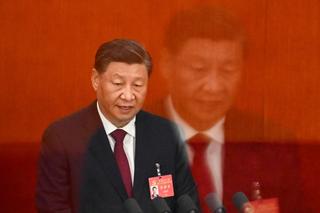The headlines
In just over 100 days, President Donald Trump has upended almost a century of US trade policy with a tariff barrage that has disrupted the international trading system, sparked fears of recession and damaged the reputation of the United States as a pillar of global economic and financial stability.
A period of chaotic policymaking began in early February with the Trump administration imposing a 10% tariff on Chinese imports, before doubling the impost in early March. Separately, President Trump announced, suspended, announced again and suspended again 25% tariffs on goods from Canada and Mexico. In March, Trump proceeded with 25% tariffs on steel and aluminium on all US trading partners on national security grounds. This included Australia which had previously secured an exemption from similar duties in 2018. Further sectoral tariffs of 25% on cars and car parts were announced soon after.
These decisions served as prelude to President Trump’s “reciprocal tariffs” plan announced on 2 April — so-called ‘Liberation Day’. Invoking the International Emergency Economic Powers Act (IEEPA), the president announced tariffs of between 10% and 50% on almost every country in the world. The trade war was justified by claims that for decades the United States had been “looted, pillaged, raped and plundered” by friends and foes alike. President Trump has stated repeatedly that “our allies have taken advantage of us more so than our enemies.”
On 9 April, against a backdrop of soaring US bond yields and a falling dollar, President Trump announced a 90-day pause in the steepest tariffs, except for duties on China. Following tit-for-tat retaliation, the US raised tariffs on China to 145% (with some exceptions) while Beijing ratcheted up tariffs on US imports to 125%, alongside other measures including restrictions on rare earths exports. Following talks in mid-May, these tariffs are now also subject to a 90-day pause (with US tariffs moving to 30% and Chinese tariffs moving to 10%).
In late May, the US Court of International Trade overturned President Trump’s use of IEEPA to impose tariffs, though Federal Circuit judges have granted a short-term stay on the ruling. All of President Trump’s sectoral tariffs remain in place with the President promising to double tariffs on steel and aluminium from 25% to 50%.
This summary of what the Wall Street Journal has dubbed “the dumbest trade war in history” is by no means exhaustive. Trump administration’s trade measures continue to roll out on an almost daily basis. Measures of policy uncertainty have skyrocketed to be “literally off the charts” in the words of International Monetary Fund Managing Director Kristalina Georgieva. Investment bank Goldman Sachs has warned that “negative trends in US governance and institutions are eroding the exorbitant privilege long enjoyed by US assets, and that is weighing on US asset returns and the dollar.”
What is happening behind the headlines?
The on-again, off-again tariff onslaught has left investors, trading partners and analysts struggling to keep up not only with each new announcement, but also with the shifting rationales for the Trump administration’s actions. Among multiple (and contradictory) objectives floated by US officials are the reindustrialisation of the US economy, balanced trade in goods with US trading partners (with no account of services trade), markedly higher revenues for the federal government and the building of a free trade bloc with US allies behind a tariff wall designed to lock out China. A simpler explanation is that President Trump wants a series of ‘deals’ that allow him to demonstrate US dominance over trading partners aligned with his zero-sum world view of economic relations.
The idea that the United States has “escalation dominance” in a trade war with China has also been proved questionable by virtue of US reliance on goods from China that cannot be sourced elsewhere or manufactured domestically only at prohibitive cost.
The prospect of a long and damaging trade war continues to hinge importantly on US-China trade relations. The Trump administration began its tariff hikes convinced that the United States had “a lot of sticks and leverage” to secure a favourable deal with China. The logic was that Beijing had more to lose from a trade war than Washington and that the US could strengthen its leverage by individually negotiating new trade terms with other countries. The goal appeared to be to put maximum pressure on China’s economy and isolate it economically.

Yet the assumptions on which Washington has engaged in trade brinkmanship have not stood up well. Globally, the United States accounts for less than 15% of global goods imports, considerably less than its share of global GDP and without the ‘network effects’ that allow it to exert critical leverage in the global financial system. The idea that the United States has “escalation dominance” in a trade war with China has also been proved questionable by virtue of US reliance on goods from China that cannot be sourced elsewhere or manufactured domestically only at prohibitive cost. The mid-May tariff pause signalled that both sides saw merit in de-escalation, though unpredictability remains an indelible feature of the Trump presidency.
Key debates around the issue
Beyond the feedback loop of financial markets — the bond market has proven by far the most effective check on unconstrained presidential power — uncertainty surrounds the role of institutional checks and balances in tempering President Trump’s tariff obsession. Rumblings of resistance have begun to emerge from the courts and Congress.
The most notable development in this context has been the Court of International Trade’s decision on the President’s use of IEEPA based on sweeping claims that the US trade deficit constitutes a national emergency. Congress has been conspicuously reluctant to reclaim its constitutional power to regulate commerce with foreign nations. The first stirrings of unease emerged in April with four Senate Republicans supporting a vote to end the national emergency used to justify tariffs on Canada. In early May, six Republican Senators co-sponsored a bill to require that Congress approve any new tariff proposal of the President, though the White House has threatened to veto it.
What to watch ahead
Washington continues to discuss a series of deals with trading partners. For the long list of countries not in immediate negotiations, President Trump has flagged that the US will be sending letters “telling people what they’ll be paying to do business in the United States.”

Leaving aside court decisions, the pause on “Liberation Day” reciprocal tariffs ends on 9 July (though some think the real date may be 4 July), while the 90-day respite period with China runs out on 12 August. The most optimistic scenario has President Trump shelving his reciprocal tariff plan due to some combination of market fallout, corporate lobbying, Republican fears of 2026 mid-term electoral consequences and concessions from enough countries that allow the US president to point to a slew of ‘deals’. That could see trading partners wind back plans for retaliatory tariffs.
Another factor to watch is US public opinion, as nearly two thirds of Americans disapprove of the administration’s handling of tariffs. The economic impact of the Trump administration’s actions – increasing the overall average effective tariff rate to 17.8% (the highest since 1934) from 2.5% while simultaneously causing unprecedented levels of economic uncertainty – is expected to increase in the coming months. Given how prominently inflation and economic anxiety featured in the November 2024 election, the political impact of a slower economy should not be underestimated.
What should allies like Australia do about it?
Australia was among a group of countries subject to a 10% tariff under the reciprocal tariffs plan. Coming on top of the Albanese Government’s failure to gain an exemption on steel and aluminium tariffs, this showed the limits of Australian arguments about the alliance, the existing free trade agreement and a long-standing bilateral US trade surplus. Australia has made it clear that it will neither launch retaliatory tariffs nor negotiate over policies such as the Pharmaceutical Benefits Scheme or biosecurity laws. With the Trump trade war proving something of a gift to Prime Minister Albanese during the recent federal election campaign, the prime minister’s stance will not change.
With US exports accounting for around 6% of total Australian exports, the macroeconomic implications of a 10% baseline tariff are small.
Australia is not in Washington’s sights when it comes to a bilateral deal and there is no obvious reason why Canberra should look to jump the queue. The deal with the UK underlines why this is the case. It was partial, non-binding and premised on further negotiations, while leaving the baseline 10% tariff in place.
With US exports accounting for around 6% of total Australian exports, the macroeconomic implications of a 10% baseline tariff are small. Nor does the Albanese Government face any real domestic political pressure on the trade front in the wake of its decisive election victory on 3 May. “We won’t do a deal for the sake of doing a deal”, Trade Minister Don Farrell told the Financial Review in mid-May, saying that the Australian Government is “prepared to wait and be patient.”
For the moment, Australia can afford to direct its trade diplomacy energies elsewhere, as shown by the renewed push to conclude a trade agreement with the European Union. However, it will need to prepare for difficult asks from the Trump administration at some point.
Unpacking Trump 2.0









